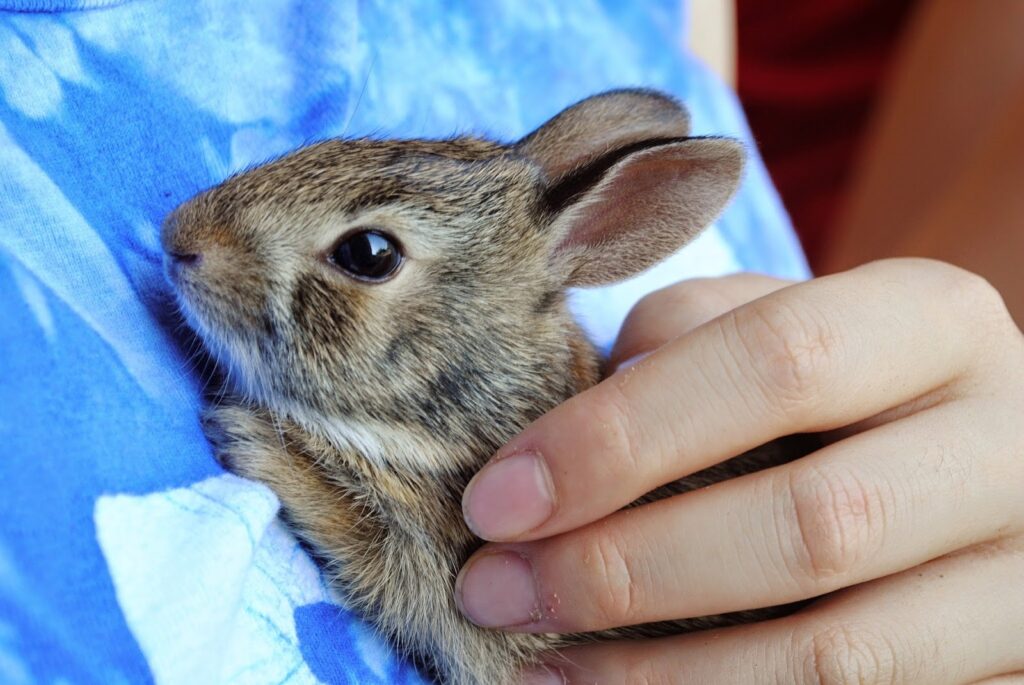
Photo: Pixabay
Finding ill, injured, or abandoned wildlife is heartbreaking. Animals bring so much beauty to the world, so it’s easy for our nurturing instincts to kick in when we find a creature that’s in danger. Helping a wild animal isn’t as simple as picking it up, taking it home, and nursing it back to health, but there are a lot of actions you can take to come to the rescue of species both great and small. Our guide explains everything you need to know about rescuing and rehabilitating wildlife.
Assess if You Should Intervene
It’s important to be very discerning when deciding if the animal you’ve discovered truly needs your help. You’ll probably do more harm than good by trying to save an animal that doesn’t need to be rescued. Some look ill or injured, but will ultimately heal on their own. Cuts and scrapes on a raccoon could indicate it got into a harmless tussle with another critter, while a young bird with feathers starting to come in may have been nudged out of the nest by a mother bird who knows her offspring is hours away from flight.
It’s also critical to know that many mother animals have to leave their young behind for stretches of time in order to bring back food. For example, rabbits leave their nests twice a day (usually just after sunrise and just before sunset) to get food for their little ones, so finding a few babies doesn’t necessarily mean they’ve been abandoned.
With that in mind, there are signs an animal’s life is in danger:
- It is crying or howling
- It has an open wound, especially one that looks fresh and/or infected
- It is bleeding
- It appears to have a broken limb
- It shows signs of heat stress, such as heavy panting
- It shows signs of low body temperature, such as shivering
- It has trouble moving, including difficulty sitting and laying down, getting up, and walking
- It appears to be dizzy
- It is very young, especially if its eyes aren’t open or its fur or feathers haven’t come in
- There is a dead animal nearby, especially if it appears to be the ill or injured animal’s parent
- The animal has been in or near the same area for hours, especially if it continues to show one or more of the above signs of distress
If you notice one or more of these signs, you should call for immediate help from experienced wildlife rehabilitators.

Photo: Pixabay
Call the Professionals
Unless you have extensive experience with rehabilitating wildlife, the first thing you should do is call a local professional agency. Do an online search specific to your area and the type of animal you’re trying to help. You can also call your local animal control agency. They may be able to directly assist you or put you in touch with specialists. If you can’t get in touch with wildlife specialists, try contacting a local veterinarian, or better yet, an emergency animal hospital. They often have doctors that are trained in veterinary medicine for critters other than common household pets, so they may be able to advise you on what you can do on the spot or at home, and they may even be able to send help to you.
Once you’ve found the organization that can assist you, be prepared to answer questions about:
- Where you found the animal
- Its size and approximate age; you likely won’t know its exact age, so you’ll be asked specific questions depending on the species to help the expert determine how old it is
- The animal’s apparent health condition
- The animal’s demeanor, especially in regards to aggressive behavior
- If you can safely move the animal out of harm’s way; depending on the species, this will include questions about any safety equipment you have on hand (like gloves) as well as your ability to transport a large animal (such as a baby deer) in your vehicle
After you’ve gone over these details, you’ll receive specific information about what you can do to help. Wildlife advocates may volunteer to meet you to provide emergency aid to the animal. For small creatures that are unlikely to threaten human safety — such as amphibians, reptiles, small birds, and baby species of small mammals, including deer, rodents, and rabbits — they may even suggest ways for you to help the animal recover from your home.
How to Help Rehabilitate Wildlife at Home
It’s important to note that you should only bring an animal onto your property and into your home with the approval of a wildlife specialist or vet. You also need to be sure you have a concrete plan of action from a professional, regardless of whether you’re providing temporary or long-term shelter.
Once you know exactly what your expert-approved care plan looks like, there are a few general guidelines you should follow no matter what species you’re saving:
- Keep wild animals away from your pets. If they come into contact with one another, each risks illness and injury.
- Keep critters away from very young children, elderly family members, and anyone who may be immunocompromised. Although the wildlife experts you work with will most likely advise you not to take animals home that are known to pose health threats to humans, err on the side of caution by keeping them away from anyone who can’t risk getting sick.
- Keep it in an area where you’ll be able to check on it regularly. Even if it will only be in your care for a few hours, it will be helpful for professional wildlife rehabilitators to know about any changes you’ve noticed since first discovering it.
The care you provide should directly follow the guidelines given to you by the wildlife specialists you’re working with. If you’ll be taking care of the animal long term, they will advise you on health and safety information, including:
- What to feed the animal, and how often to feed it
- The ideal temperature it should be kept in
- The appropriate container to keep it in and what to put in it, such as wood chips, newspaper, or cloth
- How to bathe it
- How to treat wounds or injuries as well as how often to attend to them
If you’ll only be harboring the creature for a short time, such as overnight until a professional rescue team can come pick it up, your only focus will be to keep it out of harm’s way until help arrives. You shouldn’t feed, bathe, or medically treat the animal if it won’t remain in your care unless you’re specifically asked to. It may be tempting to feed a baby critter because it feels cruel not to, but if you’re advised to take no action other than to keep it alive until the experts arrive, heed the advice.

Photo: Unsplash
Other Ways to Advocate for Ill, Injured, and Abandoned Wildlife
It’s important to know that there are heartbreaking cases where there simply isn’t anything you can do to help the animal. However, you can learn from your experience and still make a difference by advocating for wildlife in other ways. For example:
- If there is a busy road in your community where a lot of animals are injured or killed in traffic, you can contact your city council about adding improved safety measures. You may consider suggesting additional stop signs, lowered speed limits, or street lighting or road reflectors that make it easier for cars to see critters in the road.
- Post on your neighborhood or other community website about your experience, and inform the readers who to call in your area should someone else encounter a similar situation.
- Check for wildlife in your yard before using a lawn mower, using a weed whacker, adding pest control treatments, and letting your dogs outside.
- Keep large pets fenced in your yard. Most dogs — even small breeds — go after small animals they find outdoors, sometimes with tragic results. Although a fence may not keep every species out of your yard, you’ll be able to spare a lot of animals by preventing them from entering.
- Keep cats indoors. Although some felines enjoy the freedom of going outside, they are natural predators that kill small animals whenever given the opportunity.
- Avoid using rat poison. Although eliminating rats and mice from your home is an important health measure, rats are prey for other animals, including foxes, coyotes, and predatory birds. Animals who eat a poisoned rat often die, because they also ingest the toxic substance. (If you’re looking for a humane option to rid your home of these pests, you can buy humane traps and use peanut butter as bait to lure rodents in, or you can create your own using simple materials like buckets and plastic bottles. Once caught, you can release them far away from your home. Keep in mind you’ll need to regularly check these traps so they don’t die of starvation or dehydration.)
- Clean hummingbird feeders regularly. Especially when the temperature rises outside, it’s critical to thoroughly clean hummingbird feeders about every three days, although if you live in a tropical climate or the temperature is over 90 degrees, you should wash them and refill them every other day. Mold and mildew that forms in the sun-exposed sugar water in these feeders poisons the birds, and once this happens, it’s very hard to revive them.
- Clean out seed feeders at least once a month. Keep in mind you should wash them any time you notice a lot of avian activity in your yard, and when the weather is warm, it’s recommended you thoroughly clean them once a week.
- Keep bird baths and man-made ponds clean. Both of these water sources can develop mold and bacteria if the water is dirty, which can cause animals that drink from them to become ill. Standing water can also be a breeding ground for disease-carrying mosquitoes, which threaten the health of humans and animals alike. Clean your bird bath at least once every couple of weeks (or any time you notice mold or algae growth), and clean your pond whenever it looks or smells stagnant.
- Give animals a way to get out of any pools and artificial ponds in your yard. There are several inexpensive and effective ways to give animals of all sizes a way to escape the water.
Nature lovers do their part to protect the environment and all of the creatures that live in it, so it feels like a responsibility to help ill, injured, or abandoned wildlife. While it requires thoughtful planning and an expert’s help in most cases, there are a lot of ways we humans can rescue and even rehabilitate wildlife.
